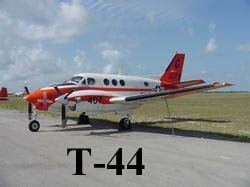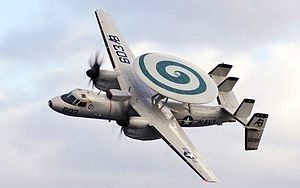 CDR Erik “Reno” Franzen presented the story of life as a Navy pilot to Gramps this month. Erik was born in Anaheim and grew up in California. He attended San Diego State University and graduated in 1991. While there, he participated in the Naval ROTC program and was commissioned as an ensign upon graduation. He wanted to become a pilot and applied for flight training. Only about four out of a hundred applicants get to fly, but Reno was selected. He underwent the “Water Survival” training that included sudden submersion in a simulator that was very difficult to handle. It was described as “Panic In A Can”.His flight training was then begun in the T-34C trainer. He soloed on his twelfth flight. From there was a selection of what kind of aircraft to fly and he chose jets. He was number three in his class.
CDR Erik “Reno” Franzen presented the story of life as a Navy pilot to Gramps this month. Erik was born in Anaheim and grew up in California. He attended San Diego State University and graduated in 1991. While there, he participated in the Naval ROTC program and was commissioned as an ensign upon graduation. He wanted to become a pilot and applied for flight training. Only about four out of a hundred applicants get to fly, but Reno was selected. He underwent the “Water Survival” training that included sudden submersion in a simulator that was very difficult to handle. It was described as “Panic In A Can”.His flight training was then begun in the T-34C trainer. He soloed on his twelfth flight. From there was a selection of what kind of aircraft to fly and he chose jets. He was number three in his class.
 Next he trained in the T- 44 Pegasus, a twin engine pressurized plane that was used to train in engine-out procedures and flight in Texas. He had 35 flights in that A/C and said it was “miserable” having to sit in the back seat while others did their practice. His next A/C was the T-2 Buckeye, a single engine jet aircraft that was carrier capable. That took place in Pensacola, Florida, and included formation training. He told a personal story at that point about his pending marriage: “Wings Before Rings” was his belief and motto, and he delayed his marriage until he had received his wings. His initial carrier qualification was achieved in the T-2 and consisted of multiple land based simulations that later turned out to be nothing like landing on a deck that is moving away from your approach. On approaching the carrier from a distance for the first time he said, “Land on that???” Being low on fuel, he was not able to make the usual several low approach practices and found himself looking for the “Lens/Ball” and not finding it. However, the LSO talked him into the proper position by radio and he landed successfully. This occurred on the U.S.S. Eisenhower and he then received his Wings Of Gold in 1994.
Next he trained in the T- 44 Pegasus, a twin engine pressurized plane that was used to train in engine-out procedures and flight in Texas. He had 35 flights in that A/C and said it was “miserable” having to sit in the back seat while others did their practice. His next A/C was the T-2 Buckeye, a single engine jet aircraft that was carrier capable. That took place in Pensacola, Florida, and included formation training. He told a personal story at that point about his pending marriage: “Wings Before Rings” was his belief and motto, and he delayed his marriage until he had received his wings. His initial carrier qualification was achieved in the T-2 and consisted of multiple land based simulations that later turned out to be nothing like landing on a deck that is moving away from your approach. On approaching the carrier from a distance for the first time he said, “Land on that???” Being low on fuel, he was not able to make the usual several low approach practices and found himself looking for the “Lens/Ball” and not finding it. However, the LSO talked him into the proper position by radio and he landed successfully. This occurred on the U.S.S. Eisenhower and he then received his Wings Of Gold in 1994.
 Next he was assigned to San Diego and flew the E-2 Hawkeye, a twin engine early warning aircraft with the massive radar dome and carrier capability for 1200 hours. He discussed night carrier landings that he described as “Adrenaline Rush”. The wingspan was so large that a deviation of 2.5 feet from the deck centerline would result in a collision with the carrier structure. He became an instructor pilot in the T-45 Goshawk for 1000 hours in Corpus Christie, TX. This was a near Mach one aircraft that would fly at 0.95 Mach but would not go supersonic even in a dive. He was a participant in the Operation Iraqi Freedom, flying the C-2 Greyhound carrier onboard delivery (COD) aircraft for 700 hours. He discovered an anomaly from previous carrier aircraft with the C-2, resulting in “boltering” a few times before getting it right. Although he had intended to retire soon, he elected to stay in and continue his service to the country after 9-11. He was the first pilot to fly a COD over Iraq. His “Best Day In The Navy” was his homecoming day to be with his family. His daughter grabbed his flight suit and would not let go!
Next he was assigned to San Diego and flew the E-2 Hawkeye, a twin engine early warning aircraft with the massive radar dome and carrier capability for 1200 hours. He discussed night carrier landings that he described as “Adrenaline Rush”. The wingspan was so large that a deviation of 2.5 feet from the deck centerline would result in a collision with the carrier structure. He became an instructor pilot in the T-45 Goshawk for 1000 hours in Corpus Christie, TX. This was a near Mach one aircraft that would fly at 0.95 Mach but would not go supersonic even in a dive. He was a participant in the Operation Iraqi Freedom, flying the C-2 Greyhound carrier onboard delivery (COD) aircraft for 700 hours. He discovered an anomaly from previous carrier aircraft with the C-2, resulting in “boltering” a few times before getting it right. Although he had intended to retire soon, he elected to stay in and continue his service to the country after 9-11. He was the first pilot to fly a COD over Iraq. His “Best Day In The Navy” was his homecoming day to be with his family. His daughter grabbed his flight suit and would not let go!
 He later got to fly with the “Blue Angels” even though they would not let him wear a G-Suit since they did not look “cool”. He took part in an inverted pass at an airshow at 100 feet over the ground. During the flight he had an episode of gravitational loss of consciousness (GLOC) since he was not conditioned for the G load as were the Blue Angel pilots,Reno woke up just before the pilot landed the aircraft. We thank Erik for his devotion to our country and the many hours of flight time and management time served as well as the most enjoyable presentation.
He later got to fly with the “Blue Angels” even though they would not let him wear a G-Suit since they did not look “cool”. He took part in an inverted pass at an airshow at 100 feet over the ground. During the flight he had an episode of gravitational loss of consciousness (GLOC) since he was not conditioned for the G load as were the Blue Angel pilots,Reno woke up just before the pilot landed the aircraft. We thank Erik for his devotion to our country and the many hours of flight time and management time served as well as the most enjoyable presentation.





